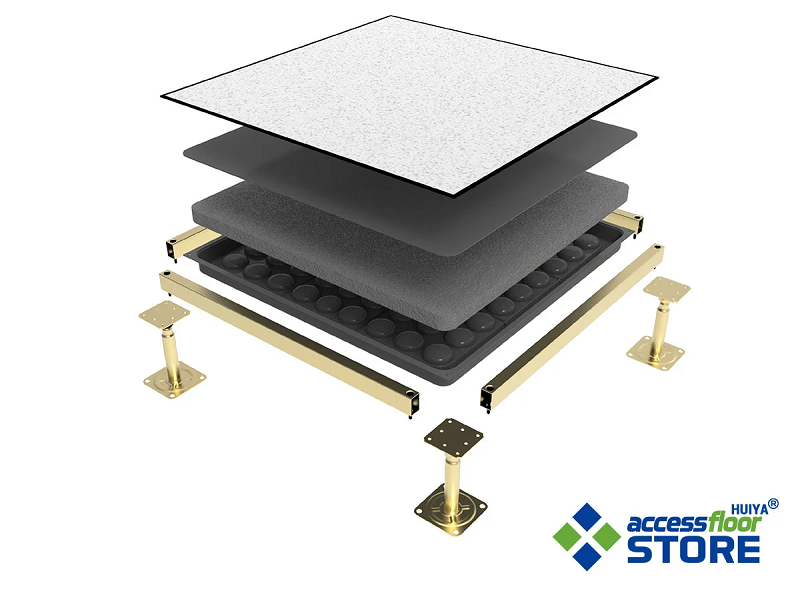NEWS TAG
brand
Why HPL Is The Most Commonly Used Surface Covering for Raised Floors?
HPL (High Pressure Laminate) is now one of the most popular and durable surface decoration materials, especially when applied to the surface of raised floors, and it is the most popular choice for customers.
HPL (High Pressure Laminate Covering)
HPL is the abbreviation of High Pressure Laminates. It is a substitute for the original plastic material board or Meina board, and the product quality is higher.

HPL Structure & Production
What is High Pressure Laminate made of & How is HPL made?
HPL uses a multi-layer kraft paper structure, phenolic resin (a kind of synthetic plastic), wood fiber core, and other materials, which are impregnated, and then a layer of decorative paper material is added on the surface, layer by layer like a sandwich, and then heated and at least >1000 PSI (1000 pounds per square inch atmospheric pressure) pressurization method to merge them together. Because phenolic resin and melamine resin (also known as melamine) are thermosetting polymers, in the curing process of thermoforming, the resin is converted into plastic through cross-linking chemical reaction, and this process can convert kraft paper, The wood fiber core is transformed into an integrated, hardened and rigid laminate. Due to such a thermosetting molding process, the resulting structural molecules are very strong and irreversible, thus improving its durability and becoming a very durable product.
HPL Applications
How and where to use High Pressure Laminate covering?
In application, a variety of adhesives can be used to stick HPL on flat materials. In the past, plastic plywood (particle board) and dense board (density board) were the preferred substrates. Due to its durability, high-pressure laminate is a common choice for horizontal or vertical surfaces (including floors, countertops, and tabletops). Special-purpose HPL has high wear resistance, fire resistance, static electricity dissipation, and chemical resistance, so it is now in large numbers It is used as a surface material for raised access floors and used in data centers, clean rooms, server rooms, technology workshops, or other environments.

HPL Features & Advantages
Why HPL is widely used as a floor covering in Raised Floor System?
1. Strong wear resistance and impact resistance - Due to the use of multi-layer material and resin cross-linking effect, and high-pressure thermosetting molding, it becomes a high-strength material resistant to scratches and impacts.
2. Penetration resistance - The HPL surface has a very high density, which can be said to be a completely sealed product, so it can prevent liquid from penetrating under the surface. Very low water absorption and moisture content, keep the product stable and not easy to damage.
3. Very stain resistant - HPL has high pollution resistance due to its surface integral molding characteristics. The multilayer structure that makes up the laminate is impregnated with resin that can make the surface waterproof, so dirt will slip off and will not penetrate the lower layer, even if it is dirty.
4. Good heat resistance - Good high-temperature resistance. It is higher than the temperature of any product derived from wood or plastic, up to 180°C, and will not deteriorate immediately.
5. Easy to clean and maintain - HPL has basic antistatic properties, that is, it does not attract dust: volatile particles in the air will not deposit on the surface, plus high-density characteristics, easy to clean.
6. Economic convenience - In the use of industrial products, especially the surface materials of raised floors, HPL is the most competitive product among the products under the same conditions in order to have both beautiful appearance, heavy resistance, and good cleanliness. Therefore, it is also mostly used in commercial spaces and factories. It is processed directly on the raised floor when it leaves the factory.
7. Applicable to various environments - HPL can withstand the strict requirements of science laboratories and classrooms. And it performs well in horizontal and vertical applications and is suitable for environments where there is a large flow of people or where more wear is expected.

